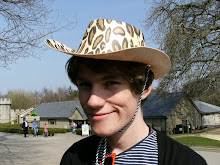


Bill Gold is by no doubt one of the greatest film poster designers of all time. Gold has created posters across seven decades, many of them famous and iconic. It is hard to choose an era that houses his greatest pieces, right from Casablanca (1942) to Unforgiven (1992), so many of Gold’s posters stand out, however it seems the 1970’s contain the bulk of his best work.
During his 60-year career he worked with some of Hollywood's greatest filmmakers, including Clint Eastwood, Alfred Hitchcock, Stanley Kubrick, Elia Kazan, Ridley Scott, and many more. Among his most famous film posters are those for Casablanca, A Clockwork Orange, and The Sting. Furthermore, Bill Gold designed (and often photographed) posters for 35 consecutive Clint Eastwood films, from Dirty Harry (1971) to Mystic River (2004).
Bill Gold was born on January 3, 1921, in New York City. He studied illustration and design at Pratt Institute in New York. He began his professional design career in 1941, in the advertising department of Warner Bros. Bill Gold became head of poster design in 1947. In 1959 his brother Charlie joined him in the business and they formed BG Charles to do the film trailers. Charlie operated BG Charles in Los Angeles, while Bill operated in New York City. In 1987 Charlie left the business and retired to Vermont. Charlie Gold died on December 25, 2003 at the age of 75. Bill Gold lives in the New York region.
In 1962, Bill Gold created Bill Gold Advertising in New York City. In 1997 Bill moved the company to Stamford, CT. and continued his business, producing posters for every film Clint Eastwood produced, directed, and/or acted in, among others. In 1994 Bill was awarded a Lifetime Achievement Award from The Hollywood Reporter. Richard Benjamin was the MC for the ceremony at the Directors Guild, and Clint Eastwood presented the award to Bill Gold on behalf of The Hollywood Reporter.
Bill Gold is currently an active member of the Society of Illustrators, the Art Directors Club and The Academy of Motion Picture Arts and Sciences.
All of Gold's posters have had a distinctive style. Each poster gave a film its unique identity, often creating the only lasting impression of a film that many would get. Gold's ever-changing style reflected a wide range of current tastes, trends, and approaches, yet never strayed from the tried-and-true basics of film promotion. Together, Bill Gold's poster art represents many of the most important American films since the advent of color photography. After his first film project Yankee Doodle Dandy, he collaborated with the American film industry's top film directors and film producers. Especially fruitful was Gold's relationship with the illustrator Bob Peak. Gold's work spanned seven decades and inspired numerous other designers.















